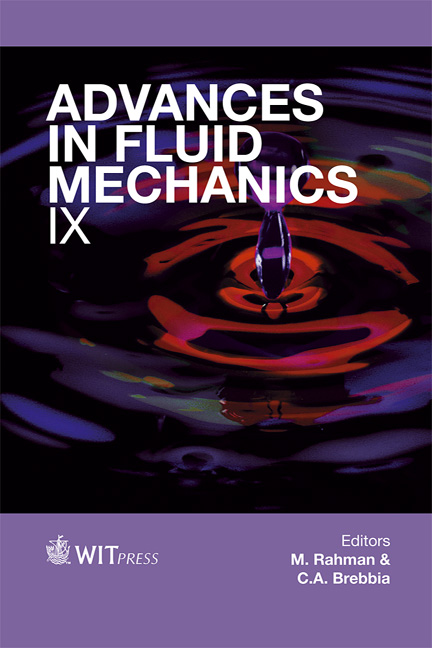Study Of The Application Of Acoustic Emission Technology For On-line Monitoring Of Bubble Phenomena And Flow Patterns In Two-phase Gas-liquid Flow
Price
Free (open access)
Transaction
Volume
74
Pages
12
Page Range
403 - 414
Published
2012
Size
1,190 kb
Paper DOI
10.2495/AFM120361
Copyright
WIT Press
Author(s)
S. Husin, A. Addali & D. Mba
Abstract
An investigation into single bubble dynamics detection in a liquid-filled column, and monitoring and measurement of gas void fraction in a horizontal pipe using AE technology has been performed. A correlation between Acoustic Emission (AE) and Gas Void Fractions in two-phase gas-liquid flow in a horizontal pipe has been established from this work. The results demonstrate the feasibility of employing AE technology as an on-line monitoring tool for bubble dynamics and flow patterns in two-phase gas-liquid flow in pipes. Keywords: Acoustic Emission (AE), gas bubble, two-phase flow. 1 Introduction Acoustic Emission (AE) technology is very practical as a passive and intrusive tool for the monitoring of material processes and for the testing, detection, and characterization of any present defect or particular event. AE describes the process associated with the emission and propagation of strain waves, resulting from localized modifications of materials [1]. If there is a transient release of energy within a solid/medium, it is dissipated in the form of elastic waves which can be detected on the surface by transducers. This process is known as Acoustic Emission (AE) [2]. The frequency of the elastic wave is usually beyond the human hearing threshold (25 kHz). The sensitivity of the AE transducer which is made of piezoelectric material can detect sound beyond the human range of hearing, i.e. 25 kHz-1MkHz is regarded as the backbone of AE technology.
Keywords
Acoustic Emission (AE), gas bubble, two-phase flow.





